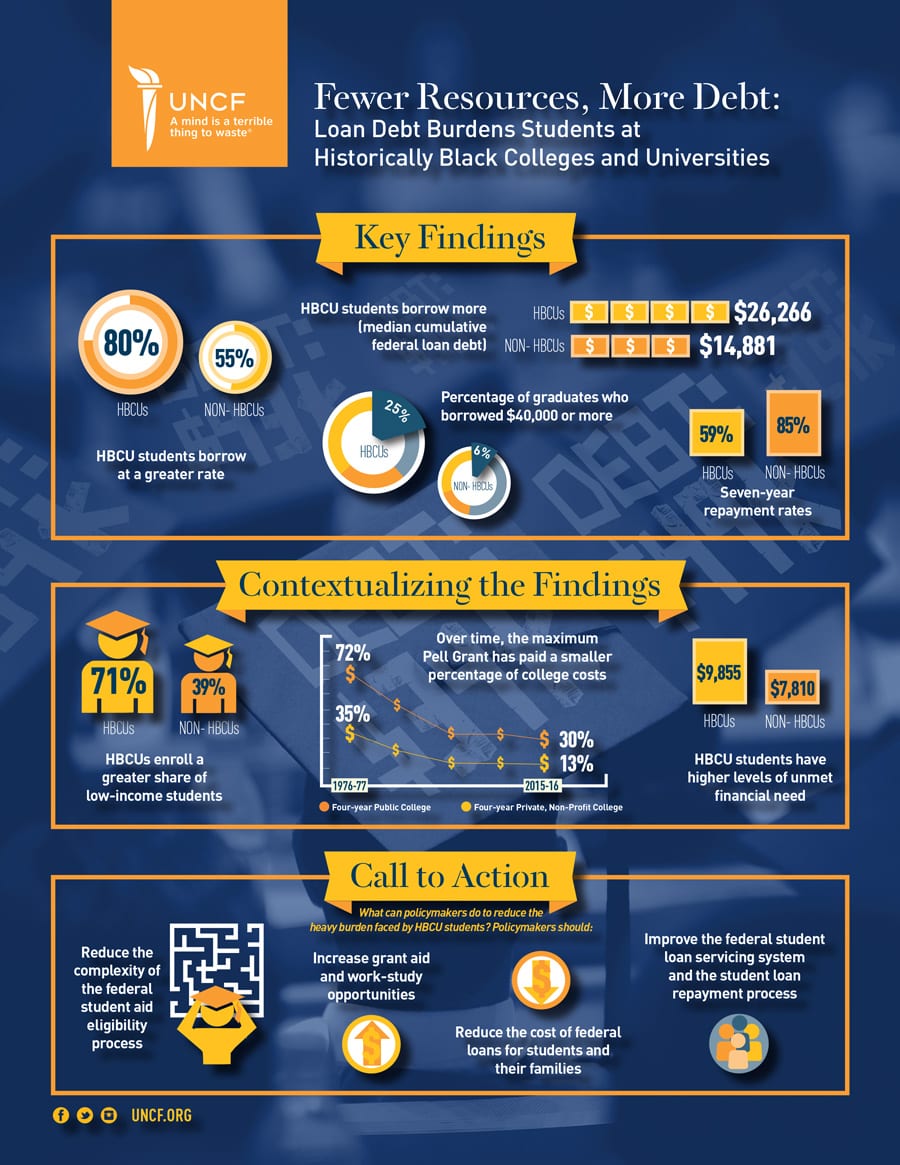HBCU Students Burdened by Loan Debt; Policy Reforms can Address Financial Challenges
Students who attend historically black colleges and universities (HBCUs) borrow student loans at higher rates and, consequently, graduate with substantially higher debt than their peers at non-HBCUs—even though HBCUs cost less—but federal policy changes could help HBCU students lighten their debt load according to a new report released Dec. 13, by UNCF’s Frederick D. Patterson Research Institute (FDPRI).
“Fewer Resources, More Debt: Loan Debt Burdens Students at Historically Black Colleges and Universities” examines the rates, amounts and distribution of student loan debt among HBCU students relative to their non-HBCU peers, focusing on undergraduates attending four-year public, private and nonprofit institutions. Despite attending lower cost institutions, HBCU students borrow loans at greater rates, borrow greater amounts, seek loans from more costly sources and encounter more obstacles repaying their loans.
 Read the full report (click image for larger view)
Read the full report (click image for larger view)
 View the report’s infographic (click image for larger view)
View the report’s infographic (click image for larger view)